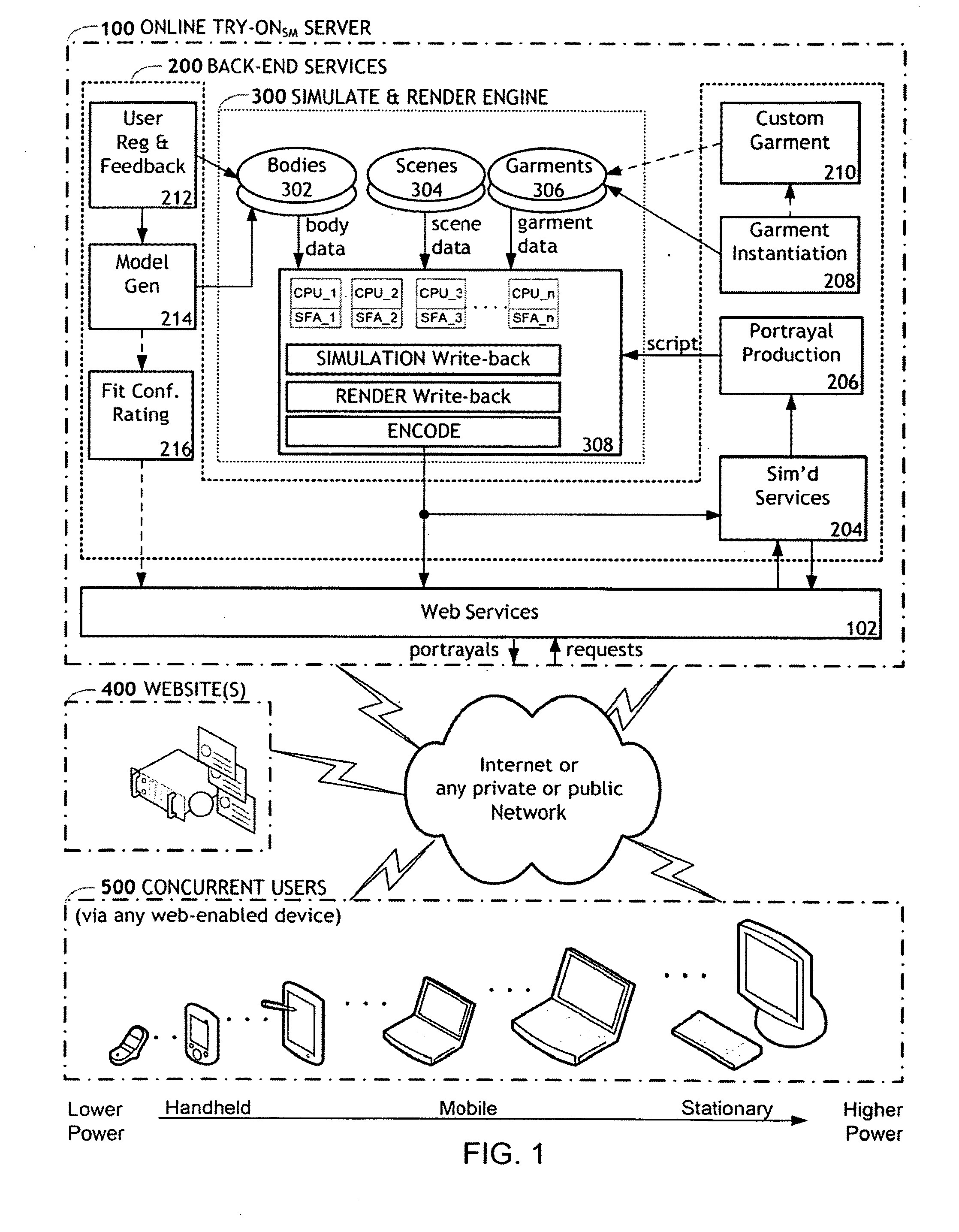Garment fit portrayal system and method
a garment fit and garment technology, applied in the field of garment fit and the portrayal of garment fit, can solve the problems of frequent dissatisfaction, high risk in the transaction of consumers for apparel articles or garments, and limited service offered by such locations,
- Summary
- Abstract
- Description
- Claims
- Application Information
AI Technical Summary
Benefits of technology
Problems solved by technology
Method used
Image
Examples
Embodiment Construction
[0019]FIG. 1 is a high-level system block diagram showing a network-connected proprietary server for receiving a plurality of digital three-dimensional (3D) user specific fit portrayal requests in real-time and a plurality of possibly portable web-enabled devices for displaying corresponding portrayals to concurrent users in real time, in accordance with one embodiment of the invented system. This proprietary server is capable of generating customized, user-specific portrayals to a large number of concurrent users, for use on any network, including the internet. Web Services 102 can be built using standard web services protocols and technologies, and provision the system's ONLINE TRY-ONSM service via any website that embeds a link to the system's services and thus provides the client-side code to a web-enabled client. In one embodiment this is accomplished with a few lines of HTML code that can run on any web browser, including those on mobile phones. If a user requests a portrayal ...
PUM
 Login to View More
Login to View More Abstract
Description
Claims
Application Information
 Login to View More
Login to View More - R&D
- Intellectual Property
- Life Sciences
- Materials
- Tech Scout
- Unparalleled Data Quality
- Higher Quality Content
- 60% Fewer Hallucinations
Browse by: Latest US Patents, China's latest patents, Technical Efficacy Thesaurus, Application Domain, Technology Topic, Popular Technical Reports.
© 2025 PatSnap. All rights reserved.Legal|Privacy policy|Modern Slavery Act Transparency Statement|Sitemap|About US| Contact US: help@patsnap.com



